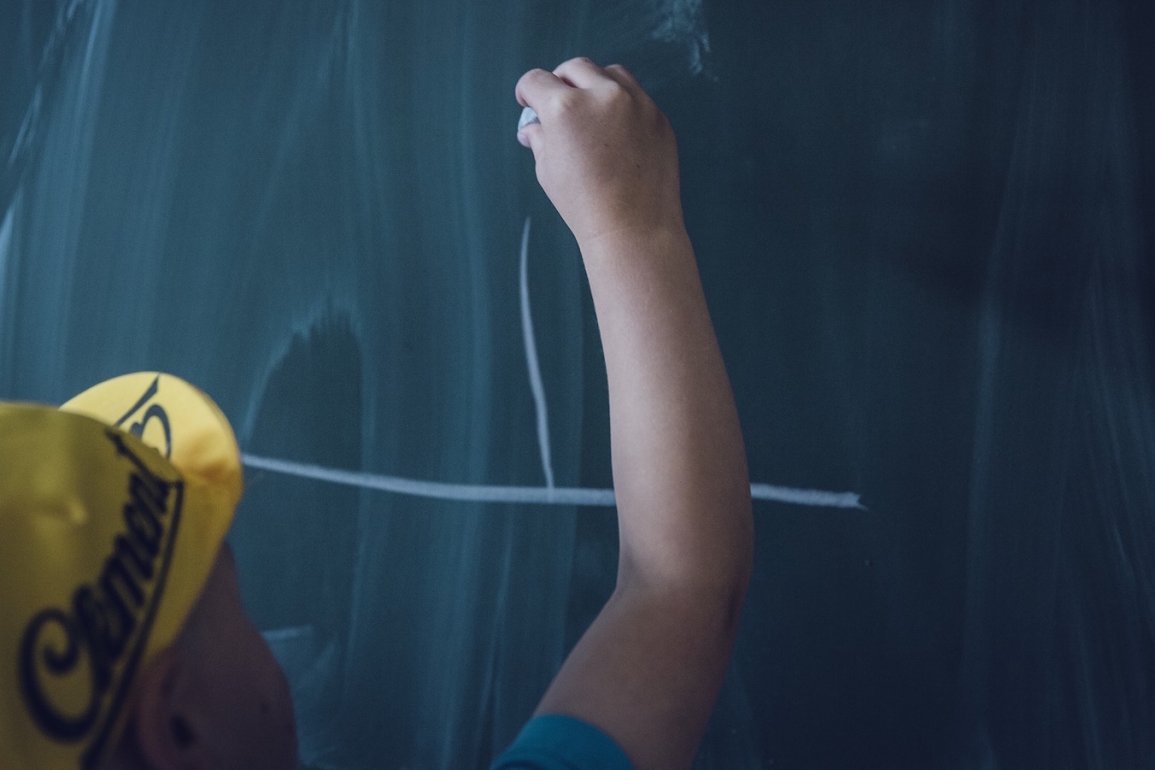Excerpts by EE Magazine from Chapter 2.2 Self-management (structures), p.61ff., in Frederic Laloux’s Reinventing Organizations
This might be for you a joyful re-reading of Frederic Laloux’s case study of the ESBZ (Evangelische Schule Berlin Zentrum). You’ll find the ingredients that can make every school a great school: first and foremost trust in students—and teachers; the profound belief that every child is unique and has its own learning pace, and can take over responsibility for their learning. Also that learning thrives in an atmosphere of kindly guidance, high expectations, and adults who are willing to learn. That might be the biggest step for schools in general: to leave the track of knowing and enter the field of not-knowing, like the former principal Margret Rasfeld did, when students were looking for answers and she didn’t have any.
from pages 93-94:
Self-managing students, teachers, and parents―a Teal school
Our schools today are probably further away from self-management than most other types of organizations. We have turned schools, almost everywhere, into soulless factories that process students in batches …. Children are viewed essentially as interchangeable units that need to be channeled through a pre-defined curriculum. At the end of the cycle, those that fit the mold are graduated; castoffs are discarded along the way.
Learning happens best, this system seems to believe, when students sit quietly for hours in front of all-knowing teachers who fill their heads with information. Children can’t be trusted to define their own learning plans and set their own goals; that must be done by the teachers. But, really, teachers cannot be trusted either; they must be tightly supervised by principals and superintendents and school districts and expert commissions and standardized tests and mandatory school programs, to make sure they do at least a somewhat decent job.
This factory-like system seems increasingly out of date. More and more people are crying out for innovation in education and starting to experiment with curricula, technologies, and governance in schools. But is it possible to build a truly Evolutionary-Teal school? And what would it look like?
A superb example can be found in the center of Berlin in Germany. The “ESBZ” is a grades 7-12 school that opened its doors in 2007 with more than a bit of improvisation. Just three months before the start of the school year, the city council had suddenly given a decrepit prefabricated building from communist times to a group of pesky parents who simply wouldn’t let go of their dream. When the school year started, only 16 students were registered. A few months later, at the mid-year point, 30 more students had joined, mostly rejects and troublemakers other schools had expelled. Hardly a promising start for a new school. And yet today, only a few years later, the school has 500 students and attracts hundreds of principals, teachers, and education specialists from all over the country who want to study the ESBZ model.
The driving spirit of the school is Margret Rasfeld, a former science teacher and radical innovator, whom the group of parents recruited as principal …. The seed for the school was planted 20 years earlier, in an event that would profoundly change Rasfeld’s outlook on children and education. In 1986, a few 8th-grade students she was teaching approached her to discuss the violence, bullying, and extortions taking place in their school. She said they were welcome to talk things out in the privacy of her home, if they wanted to. Sixteen students came.
A week later there were 33. The teenagers were looking to her for answers; she didn’t have any, but she helped them journey to find their own. In the process, she discovered a side of the children she had never seen before.
She marveled at the courage, persistence, resilience, intelligence, and compassion students were finding in themselves and that the school had never evoked before.
From then on, she was determined that education should do justice to children’s true potential and true nature; she wanted to engage not only their minds, but their hands, hearts, and souls, too.
Fast-forward to the present at the beginning of a school day. As a visitor to ESBZ, even while still outside at the entry gate of the school, you can sense there is something different about the school. It has to do with the children’s presence, the way they walk and interact. The students don’t hang out at the gate waiting until the last minute to go in; they seem happy to walk straight toward their classroom. They sport an air of quiet determination and concentration, their mind already on some project. There is no adolescent posturing, no competition of cool. The school claims in its founding principles that all children are unique, that they all have talents to contribute, that they are valuable, valued, and needed.
Somehow, the way these children walk into their school seems to say these are more than mere words; the students seem to have embodied the school’s guiding principles in their very bodies, posture, and attitudes.
How are these principles translated in the school? First and foremost, children are given full responsibility for their learning. To a large degree, students teach themselves and each other. Adults are mostly mentors and coaches and only act as teachers in the traditional sense when needed. They offer encouragement, counsel, praise, feed- back, and challenge. The responsibility for learning is firmly in the hands of the students.
From pages 95-96:
Each student has a logbook, in which they record what they have accomplished. … There are clear expectations of what is expected at the end of the year (students are free of course to go beyond the expectations when they are passionate about a subject, and many children choose to do so). Every child has a one-on-one meeting every week on Friday with their tutor-teacher. Together they discuss progress made during the week, problems that might have come up, and plans for the week ahead―and also, when relevant, emotional or relational topics that weigh on the child’s mind.
Through these weekly one-on-one discussions, teachers and students know each other on a much deeper level than in traditional schools. The children know: Someone cares about me; someone is there to listen. Twice a year, in a discussion with their tutor, students set themselves three goals for the upcoming months. For instance, Paul, a shy 13-year-old, set himself the goal of becoming more comfortable being seen by others. One of the things he wants to learn is to speak up more in public.
The self-paced learning of basic subjects takes the first two hours of the morning. A big chunk of the day is spent working on individual or collective projects with real-life implications. Some students redesign a part of their school building and then coordinate the actual renovations. Others might try to get the city council to adopt higher environmental standards. Students are encouraged to find out what matters to them, to aim high, to fail, to try again, and to celebrate their accomplishments.
They learn that their voice matters, that they can make a difference, that others need them and that they need others.
All year long in grades 7 and 8, students spend two hours every Wednesday outside of school in a class called “Responsibility .” In counsel with their tutor-teacher, the children find themselves an activity where they can make a meaningful contribution while learning at the same time. Paul, who wants to overcome his shyness, volunteered to teach chess at his former primary school. The chess class he had loved so much would no longer take place, he had heard, because the teacher was moving to another school. Paul was sad that other kids wouldn’t enjoy learning chess the way he had.
Suddenly it all made sense: Paul could teach chess; standing in front of a group of children fit with Paul’s goal of learning to speak in public―and doing so in front of younger children would be an easier way to practice. All he needed to do now was convince the principal of his former school to let him have a go at it. Just like Paul, all students find a place that suits them. Some work in retirement homes, while others organize school plays in kindergartens. It all depends on their interests and learning objectives.
Children experience what it’s like to take initiative, to be needed, and to make a difference in other people’s lives.
In grades 8, 9, and 10, students have a class called “Challenge” (the beautiful German word “Herausforderung” literally means “being called to grow from the inside out”). They are invited to delve into some inner potential that lies dormant. During the year, they organize and prepare for a special three-week session, where they, alone or in small groups, will challenge themselves to step out of their comfort zone.
One group of four students prepared for a three-week survival camp deep in the woods, where they lived in a shelter they built and on food they gathered. Daniel, a 16-year-old extroverted youngster, found his challenge in a three-week silent meditation in a monastery. A music teacher challenged a group of children to do intense music practice eight hours a day for three weeks in an abandoned old farm. Other students biked through Germany together, with little money, having to ask for accom- modation and food along the way. The experience is often taxing, but students rave about their accomplishments and the personal growth they experienced, confronting their fears and growing beyond them.
The most daring experiment with student self-management is currently underway. At the end of grade 12, students in Germany must pass a state exam; the grades they get determine what university they can apply to. The stakes are so high that grades 10, 11, and 12 at ESBZ have thus far relied on more traditional teaching-to-the-test methods than students and faculty would like.
Could it be possible, students and faculty wondered, to completely redesign the curriculum of grades 10, 11, and 12 in accordance with the school’s guiding principles, while still preparing students well for the state exam?
This year, all students from those grades will work in an ambitious yearlong project to redesign these three grades. Experts in Design Thinking (a methodology developed by IDEO, a celebrated design firm) will help the children and faculty, in an intensive two-day design workshop, to develop an overall concept. Students and teachers will then work the rest of the year, with support from leading education experts, to turn the concept into concrete structures and practices. Students and teachers are effectively redesigning their own school.
Teachers at ESBZ self-manage too. Teaching is often a lonely profession; at ESBZ it is a team sport…. Parents also self-manage. What they do and how they do it all happens based on self-managing principles.
What is remarkable is that ESBZ enjoys no free pass. The school has to make do with the same amount of teacher hours as any other school in Berlin. Even with the parents’ contribution, the school has a lower budget than public schools. Every school can replicate ESBZ’s success, because more money or resources are not the decisive factor. All it takes, really, is to look at children, teachers, parents, and education with fresh eyes.
from page 160:
ESBZ, the grade 7-12 school in Berlin, has an extraordinary trust and community-building practice based around storytelling: the “praise meeting.” Every Friday afternoon, the entire school―students, teachers, and staff―comes together for an hour in a large hall. They always start by singing a song together, to settle into community. All the rest of the time together is unscripted.
There is an open microphone on stage, with a simple rule: we are here to praise and thank each other.
For the next 50 minutes, students and teachers who feel called to do so stand up, walk up on stage, take the microphone, and praise or thank another student or teacher for something they did or said earlier in the week; then they go sit down again and someone else takes the stage. Every person at the microphone shares what is essentially a miniature story that reveals something about two people―the storyteller and the person being praised or thanked―in their struggles and in their glories.
The storytelling erases boundaries between students and teachers. It’s part of the human condition that everyone at some point feels down, confused, or stuck, and in need of help. And everyone has the gift of empathy, of finding ways to offer support, comfort, and friendship. It takes courage to stand up and praise others publicly, but in the school it has become standard practice. Students don’t shy away from stories that are funny, touching, and heartfelt. Students and teachers credit this weekly session as the defining practice for the school’s extraordinary spirit of learning, collaboration, and maturity.
Republished with permission of the author.
Featured Image/graphic link added by Enlivening Edge Magazine.




